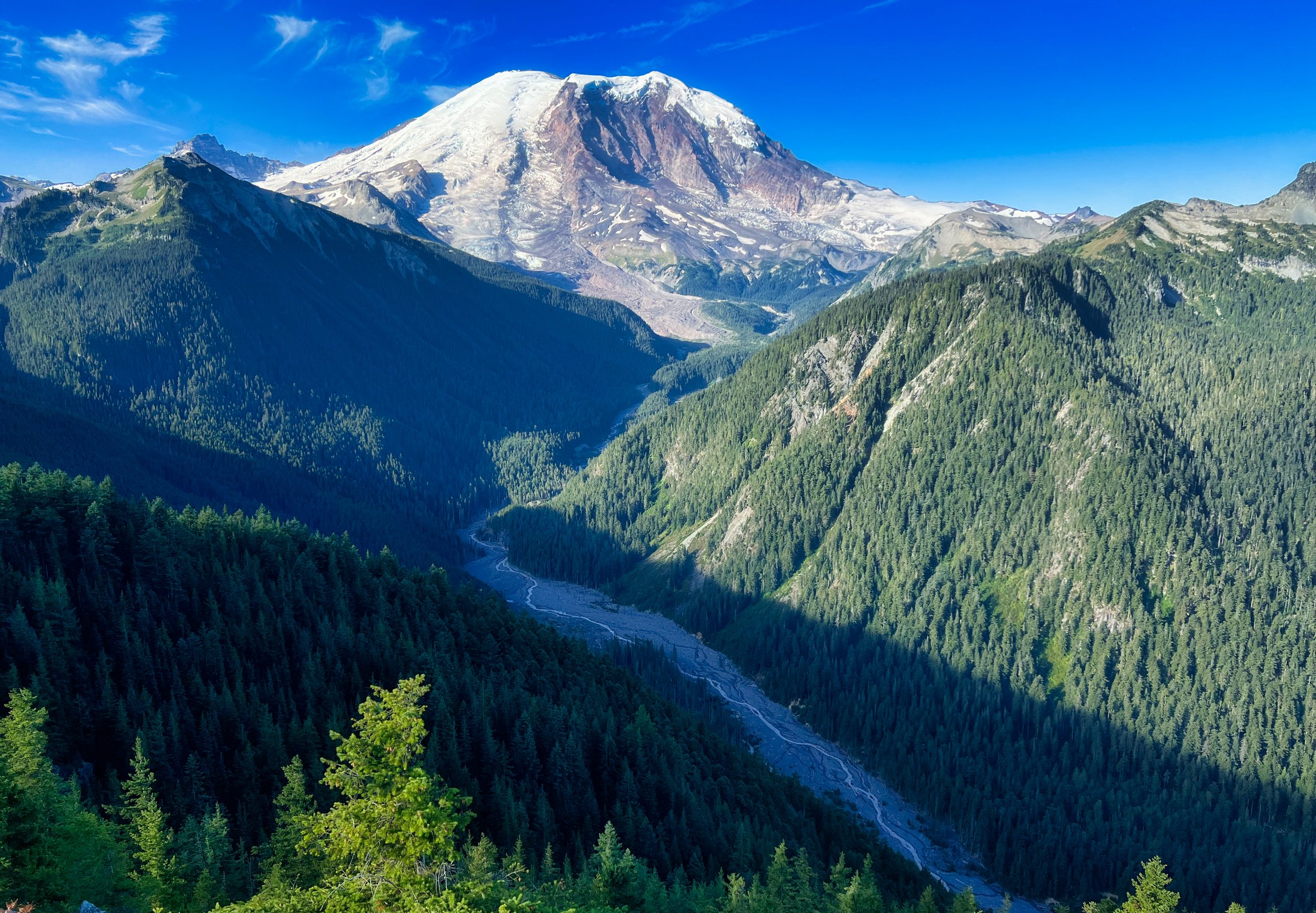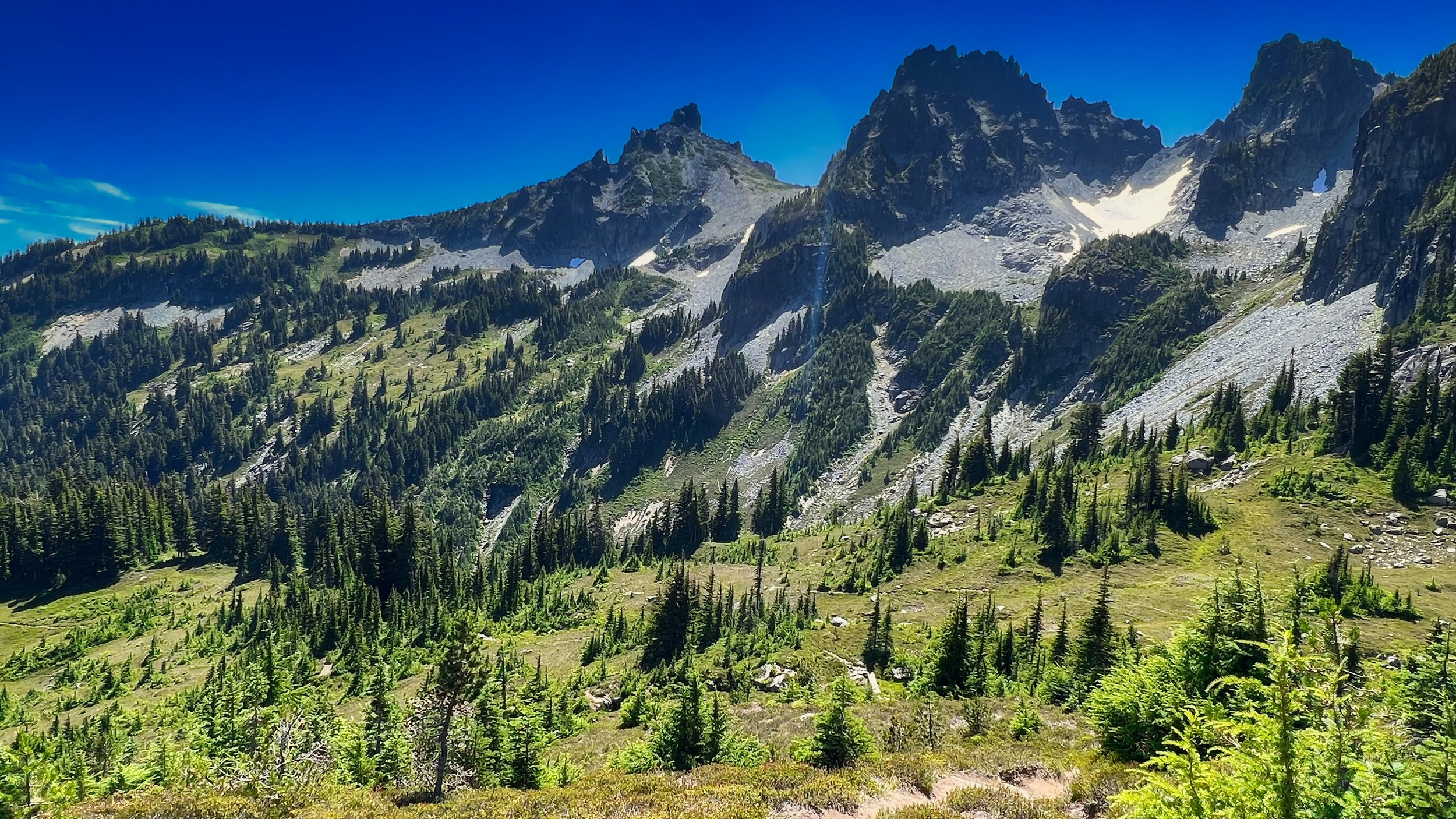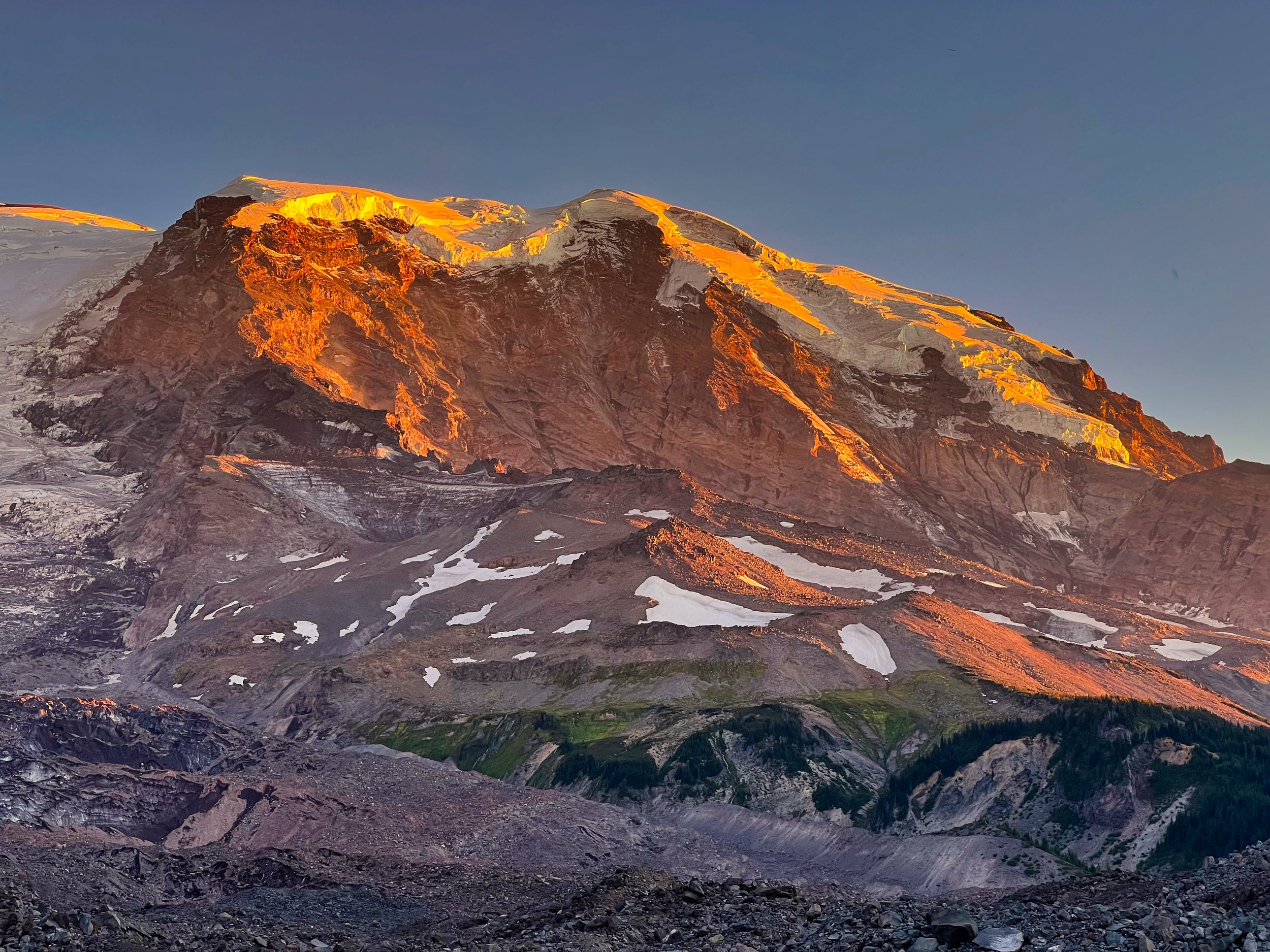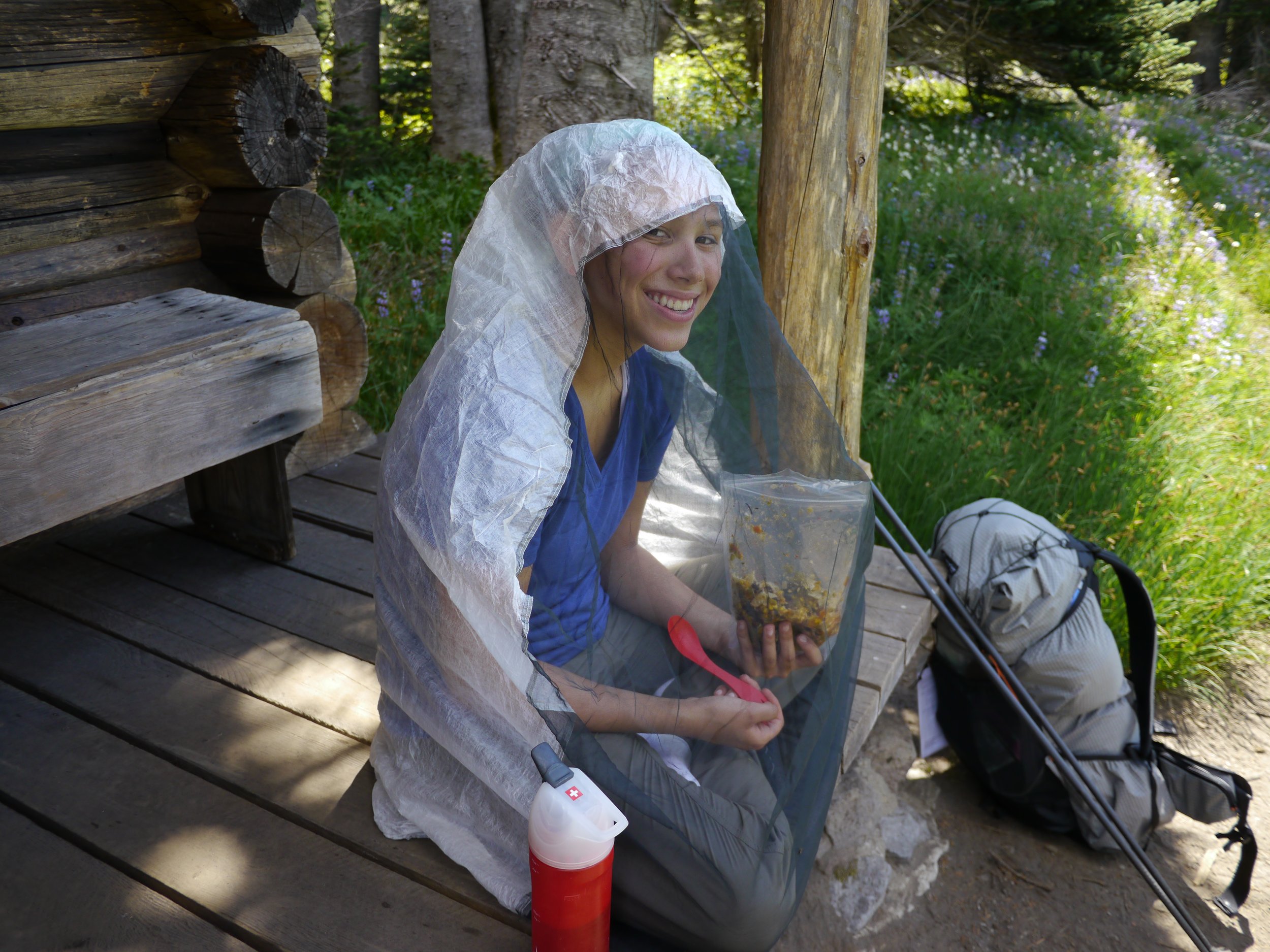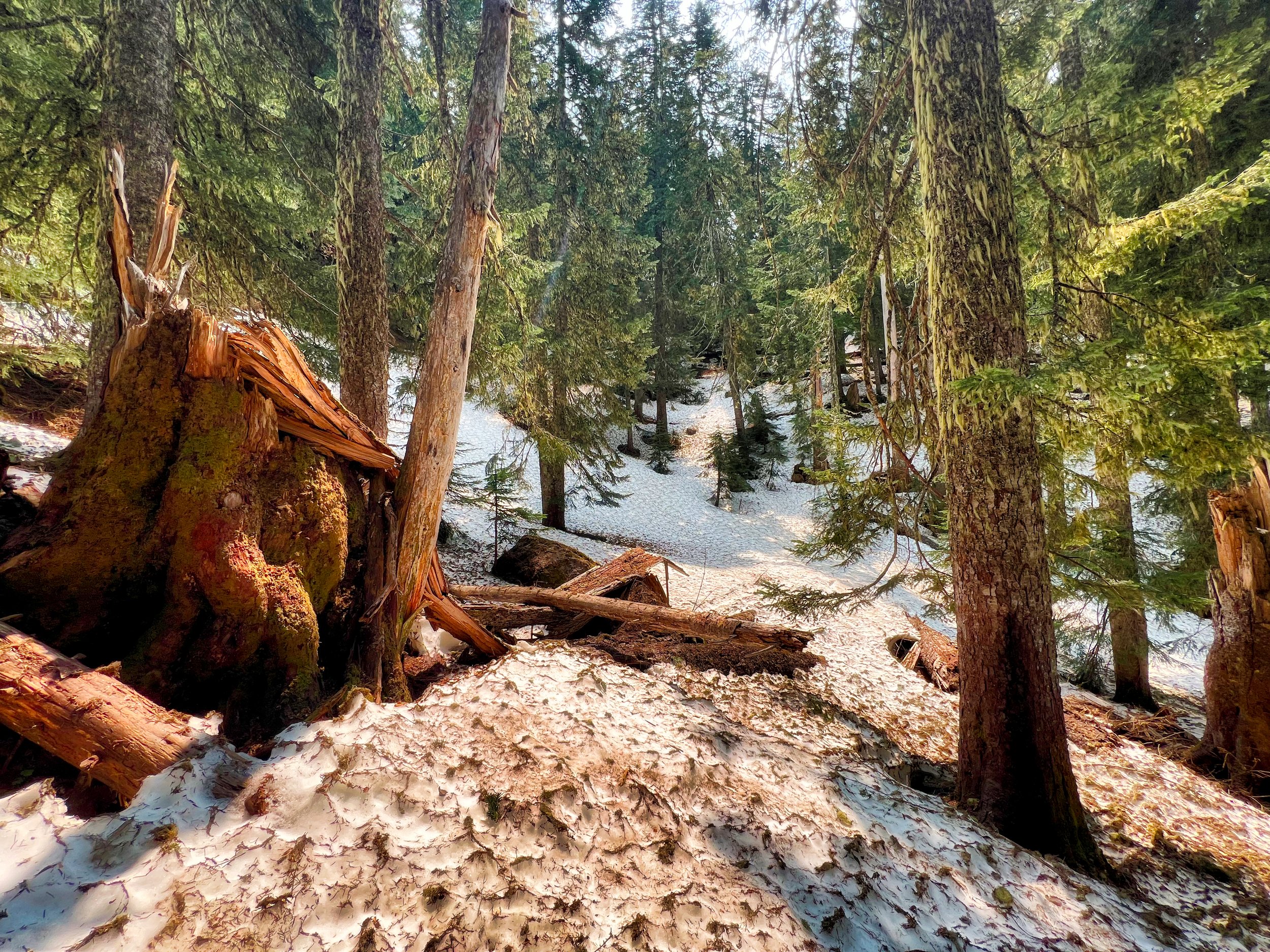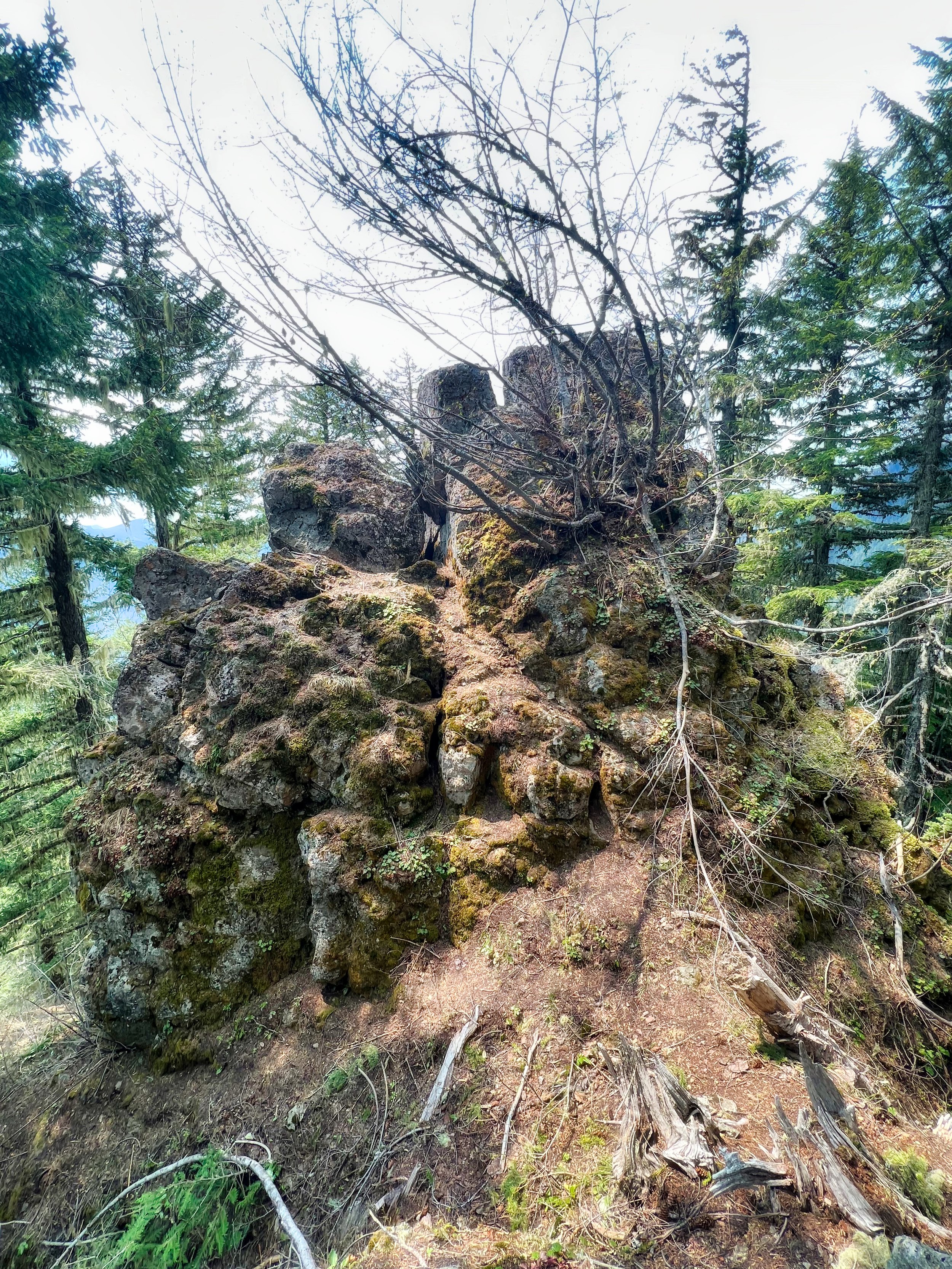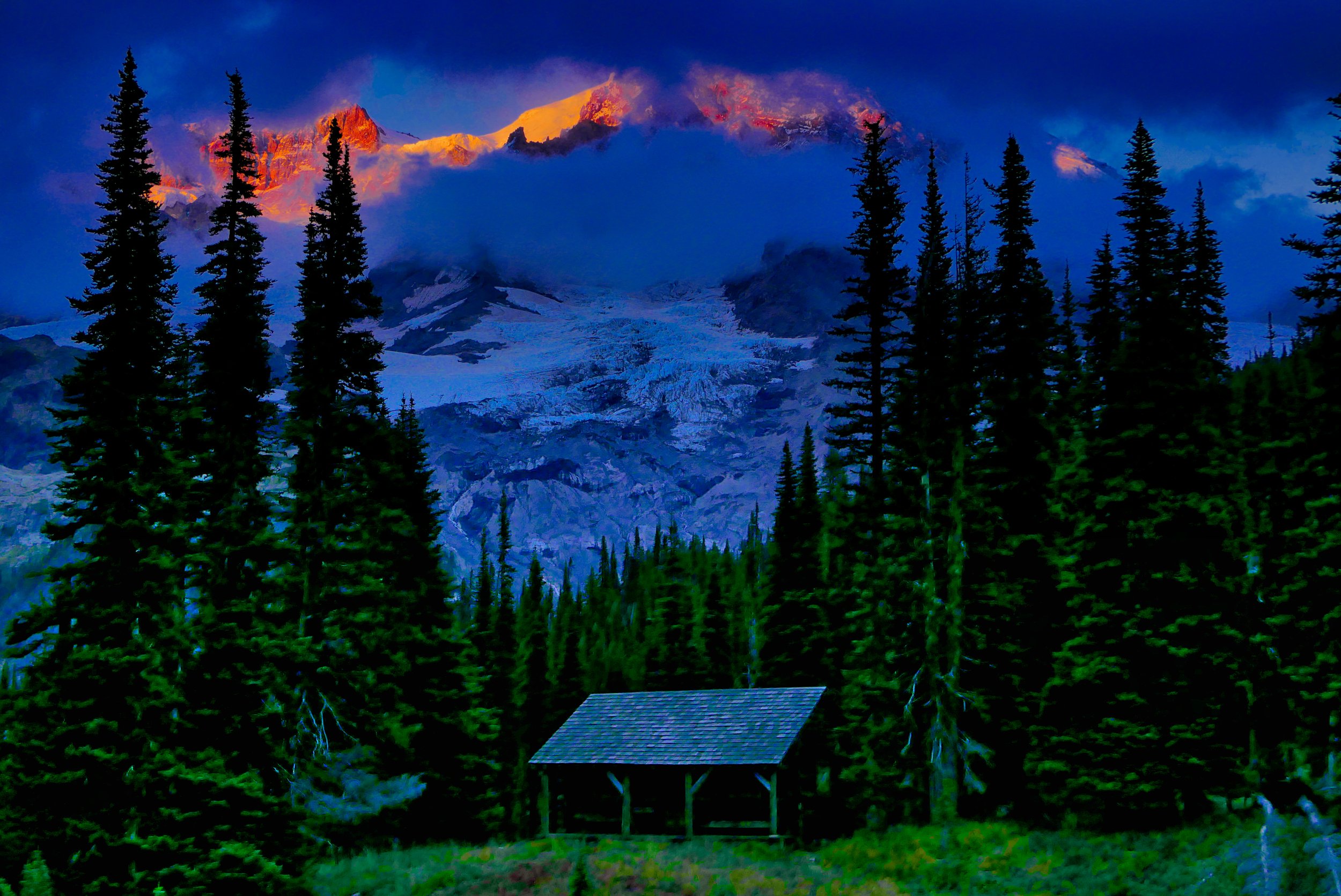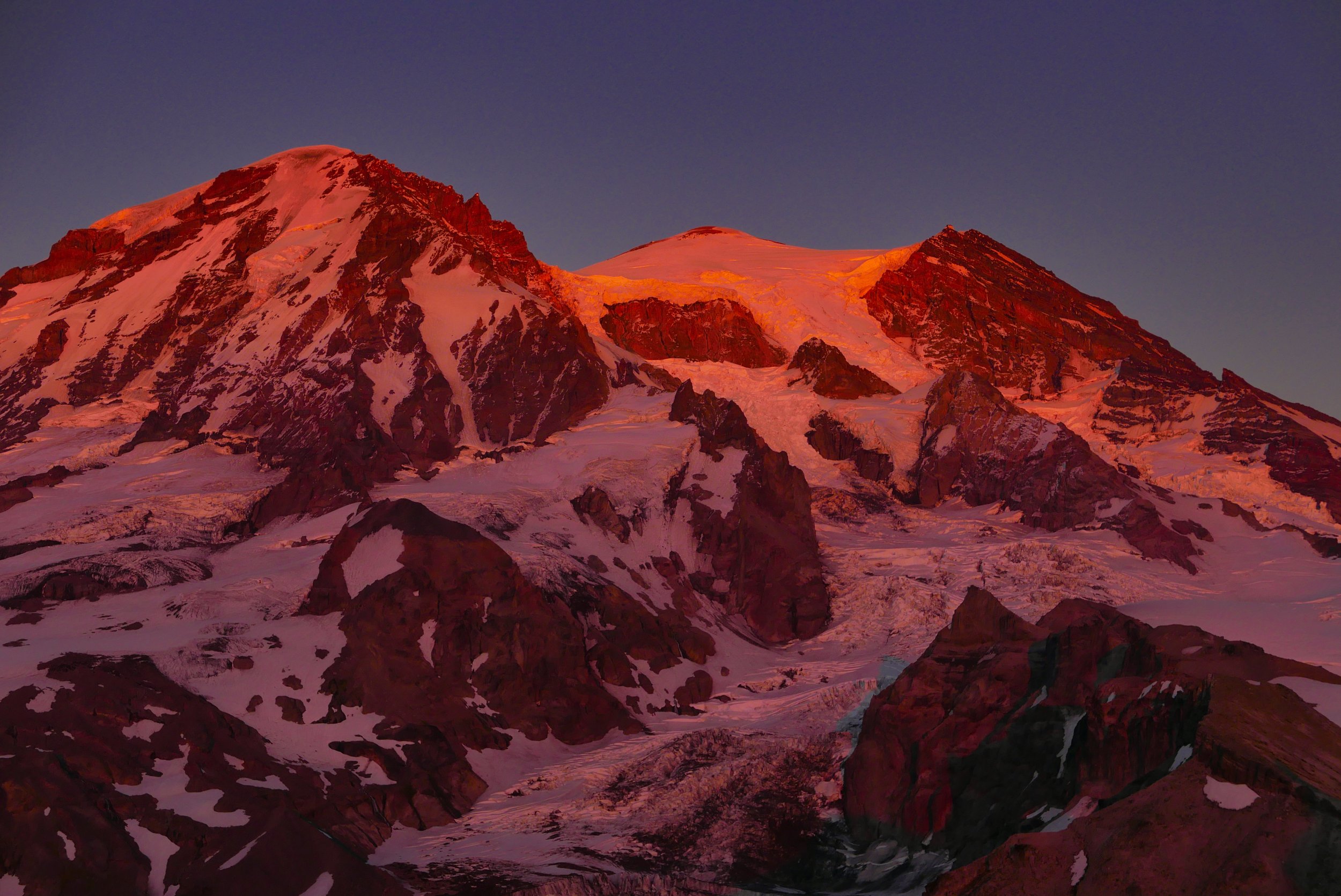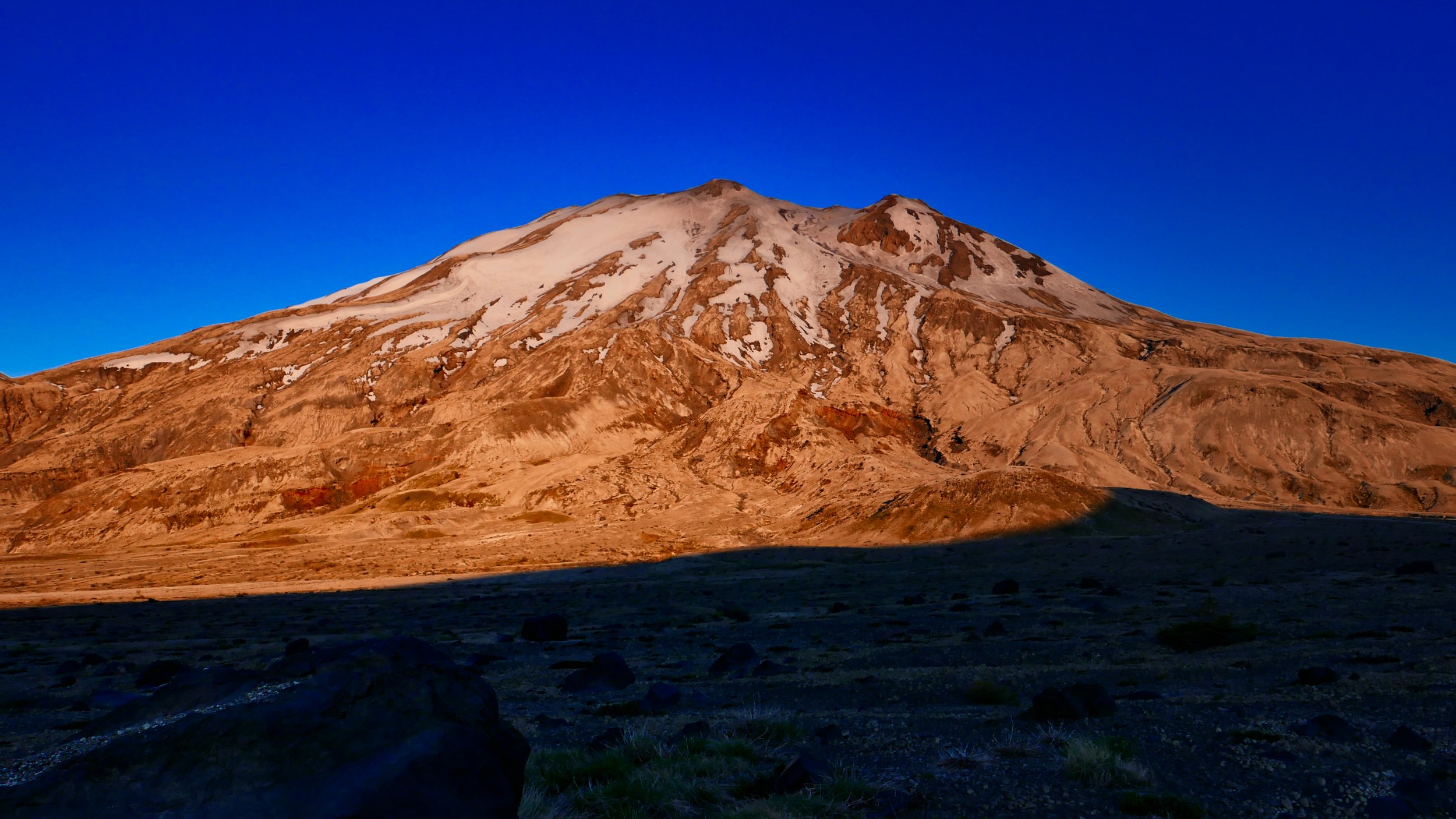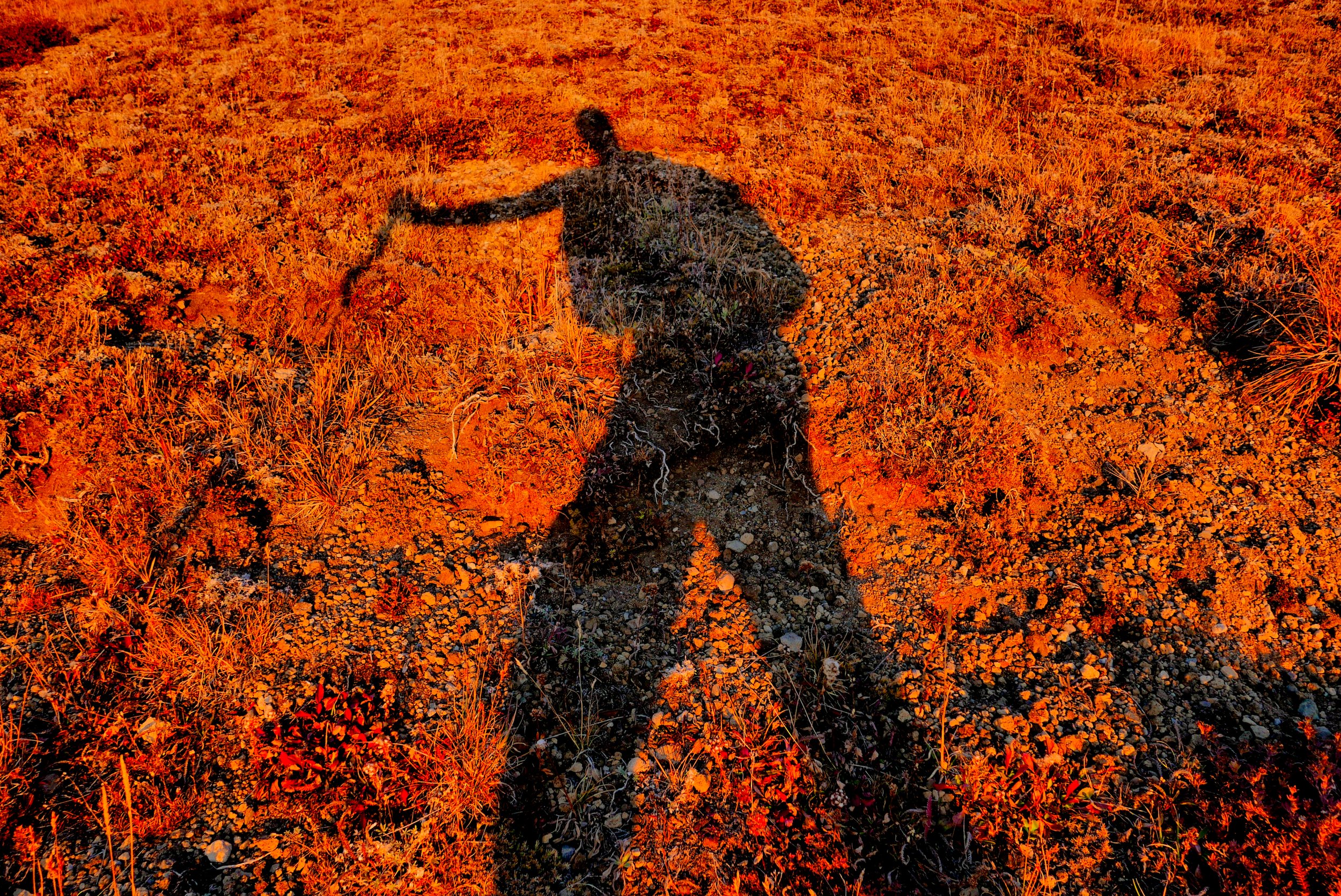Northern Loop Trail
A busy July precluded any hiking that month, so I hit the Northern Loop Trail (Mt. Rainier National Park) on August 3rd in preparation of hiking the full Wonderland shortly thereafter. The Northern Loop Trail (NLT) approximates the toughest day I may see on a 3 day Wonderland, coming in at 38 miles with 9,800’ of elevation gain. Over 20 years ago I would do this trail in under 12 hours as training for ultras. This iteration took considerably longer; 18 hours total. Generally speaking, the hike went well with the last 10 miles offering a test of legs and mettle. There is a video chronicle at the end of this post.
Mt. Fremont from Grand Park
I got an early start at 5:30 AM at Sunrise, enjoying spreading alpenglow from the meadows beneath the Burroughs Mountains. A highlight of the trip is the jaunt through Berkeley Park, with the fairy tale like Lodi Creek bubbling along the way, feeding flowers late into the season. A relatively short wooded section deposits the hiker on the far end of Grand Park, the unique anomalous flat mesa. As I stepped along the trail in bright morning sunshine, thousands of tiny grasshoppers took to short flights to avoid my feet, parting the way like a bow wave. The snapping sounds they made as they hopped away reminded me of popcorn. This experience is just one of the surprising delights that happen on the trail, being in the right place at the right time by happenstance. As a parting shot the mountain offers up a grand view before dropping over 2,000’ to the West Fork of the White River.
A grand view leaving Grand Park, Mt. Rainier National Park
The crossing of the West Fork is a bit convoluted, and I actually lost the trail by following an older version for a bit before realizing my mistake and backtracking. No further navigation problems were encountered after this brief distraction and I enjoyed the climb to Windy Gap, legs and motor still cooperating as I approached the half way point mileage-wise. This second drop from nearly 6,000’ to 2900’ taxed the downhill legs, always the weak area without a good amount of prior trail miles under my belt. I was glad to start climbing again and intersect the Wonderland, which comprises the rest of this loop. Glorious conditions, changing views and cool breezes helped mitigate the growing fatigue creeping up on my untrained old bod.
Sluiskin Mountains approaching Windy Gap
As I crested Mystic Pass (6,000’) and descended to Mystic Lake, I knew the last 10 miles were gonna be a challenge. I waded in the cool waters of Mystic Lake, enjoying some snacks while basking in the warm sun, delaying my departure knowing what was ahead; hours of degrading legs, sputtering motor and mental challenge, conditions I am so accustomed to I almost welcome this suffering as an old friend. By this stage in life I can still enjoy my surroundings despite the toil, and I appreciated a rising moon and passing fox as I shuffled toward Sunrise. Doing hard stuff accentuates the good stuff, my ineloquent quote for the day.
Mystic Lake
Evening alpenglow from the Northern Loop Trail (Winthrop Glacier)


